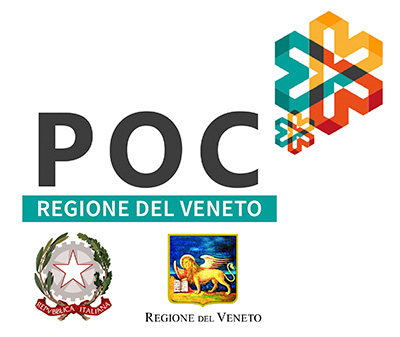AN ANCIENT

A UNIQUE
BALANCE
Our production
area
Distinctive, unique, and unparalleled
territory of the Valdobbiadene
Conegliano DOCG
Veneto
Province of
Treviso
Our vineyards
UNIQUE
GRAPE VARIETIES
The terroir of Conegliano Valdobbiadene encompasses a strip of 15 municipalities within an area characterized by unique geological and climatic features, situated between the Venice area and the Dolomites mountain range. These are hilly soils, naturally steep, rocky, sandy, and clayey, with a millennia-old ruggedness that hardly allows water stagnation. The hills are always ventilated, immersed in a mild microclimate (the average annual temperature does not exceed 12.3°C), where different terrains coexist. On one side, they are the result of the melting of Dolomite glaciers, thus rich in mineral sediments, and on the other side, they have a marine origin, being more permeable and deep.
A territory rich in contradictions and stratifications, where the slope of the hillside, the different exposure to the sun, and the varying soil composition give rise to specific micro-terroirs and the production of unique grape varieties, from Rive to Cartizze. Since the second half of the 19th century, Conegliano – Valdobbiadene has been officially recognized as a Prosecco production area, with the founding of the first Italian Enological School. This is a historically significant chronology, sealing a centuries-old tradition, previously unrecorded. A story that repeats and evolves for a century, until the establishment, in 1962, of the Consortium for the Protection of Prosecco from Conegliano Valdobbiadene and the attainment, in 1969, of the Denomination of Controlled Origin. The rest represents the recent grand history: the DOCG (Denomination of Controlled and Guaranteed Origin) status in 2009, the definition of “Conegliano Valdobbiadene Prosecco Superiore,” and the recognition of the entire terroir as a UNESCO World Heritage Site.
The Production Regulation of Conegliano Valdobbiadene DOCG Prosecco Superiore
VINEYARD LOCATION
The grapes exclusively come from the cadastral area of the 15 municipalities originally specified in the Production Regulation.
GRAPE VARIETIES
At least 85% of Prosecco must be produced from Glera grapes, with the remaining 15% allowed to come from other authorized varieties: Verdiso, Bianchetta trevigiana, Perera, Glera lunga.
VINIFICATION
can only take place in the province of Treviso.
SECONDARY FERMENTATION
can only take place in the province of Treviso.
MANDATORY ORGANOLEPTIC ANALYSIS
must be conducted before bottling and exclusively carried out by a Commission of Oenologists at the authorized Chamber of Commerce.
THE QUALITY
VALUE
Superiore di Cartizze DOCG
approximately 1,600,000 bottles
Valdobbiadene Prosecco Superiore DOCG “Rive”
approximately 3.000.00 bottles.
Valdobbiadene Prosecco Superiore DOCG
approximately. 102.000.000 bottles.
Prosecco DOCG
approximately 970.000.000 bottles.
The Charmat
or Martinotti
method
Unlike the traditional refermentation of wine in bottles, the Charmat-Martinotti method involves the second fermentation of the wine taking place in autoclaves: pressure-sealed containers, typically made of steel, with precise and controlled additions of sugars and yeasts and no additives to carry the foam. The bubbles indeed form (secondary fermentation) thanks to the natural reaction between sugar and yeast. The prolonged contact of the wine with its own yeasts for specific periods allows for a series of highly refined evolutions and fascinating sensory articulations. It’s a precise and meticulous process, comparable to the complexity of the traditional fermentation method.
The curious dispute over the name of the winemaking method: Charmat or Martinotti?
As is typical of many great artisanal and industrial inventions, even in the case of winemaking fermentation methods, there is a “before” and an “after,” the creation of a machine or system, and not always does the originator of the idea coincide with the one who perfected the method. In the case of refermentation in autoclaves, the idea was Italian, and Federico Martinotti, director of the Experimental Institute for Enology in Asti, was the architect. In 1895, he theorized the possibility of fermenting wines in sealed tanks for a specific period of time and at a controlled temperature. However, it was Eugène Charmat, a French engineer, who practically realized the first autoclave for wine refermentation, 15 years after Federico Martinotti’s brilliant insight. Hence the authorship of this production process, initially known mainly as the “Charmat Method,” later also remembered as the “Martinotti Method” or generally as the “Italian Method,” thanks to the worldwide success achieved in the twentieth century by Italian wines refermented on their own yeasts (from Prosecco to Moscato to Lambrusco).
The residual
sugar
Extra Brut
The most recent type of Prosecco. It involves a minimal amount of sugars, ranging from 0 to 6 grams per liter, resulting in a particularly dry effervescence, where a distinctive acidic note is pronounced. The taste and aroma are fruity, reminiscent of apple, pear, and citrus, with subtle hints of cluster flowers such as acacia and wisteria. Although considered an all-meal wine, extra brut Prosecco is ideal as an aperitif, especially when paired with seafood crudité and shellfish.
Brut
The most appreciated Prosecco beyond Italian borders typically has a moderate residual sugar content, ranging from 6 to 12 grams per liter. It is an all-meal wine, floral on the palate, savory, markedly acidic, with toasted reminiscences.The taste and aroma are fruity, reminiscent of apple, pear, and citrus, with subtle hints of cluster flowers such as acacia and wisteria. Although considered an all-meal wine, extra brut Prosecco is ideal as an aperitif, especially when paired with seafood crudité and shellfish.
Extra Dry
With its sugar content ranging from 12 to 17 grams per liter, its freshness, and its pleasantly aromatic nature, Extra Dry is a classic among Proseccos, immediately recognizable on the palate and nose. Richly perfumed, with hints of fruit blending into floral notes, it is perfect as an aperitif and for any celebration.
Dry
A soft, decidedly sweet Prosecco (with a residual sugar ranging from 17 to 32 grams per liter), aromatic, characterized by bold aromas of ripe fruit. Excellent as a dessert wine, for toasts, and social occasions, especially when paired with small sweets and pastries.



